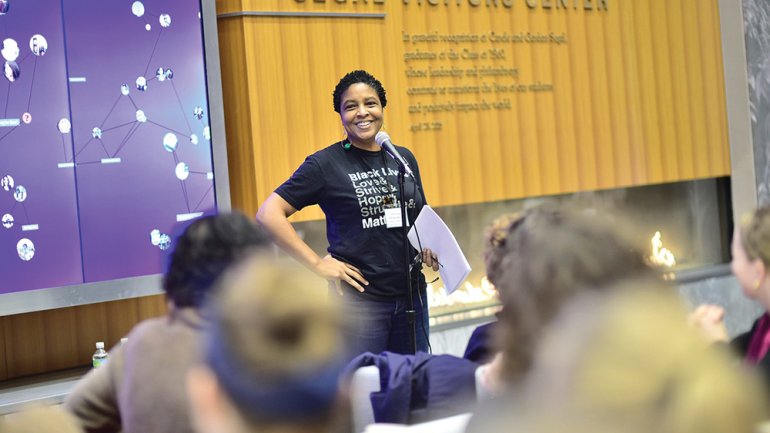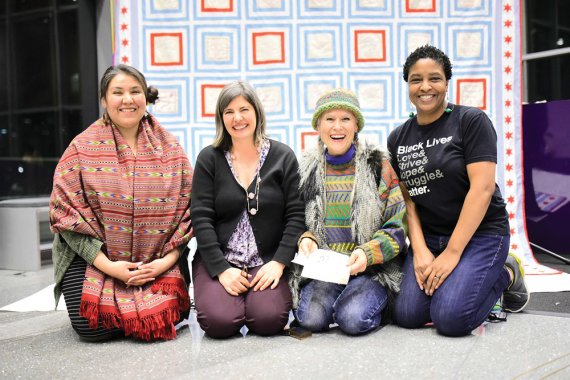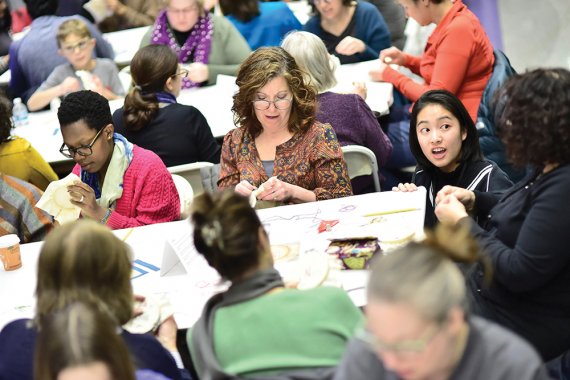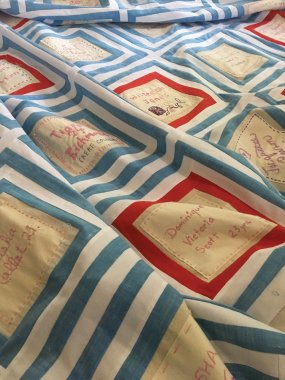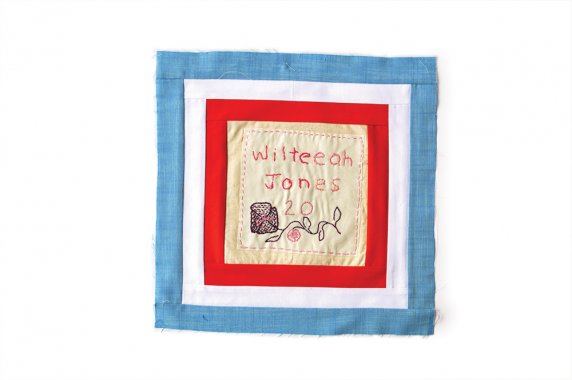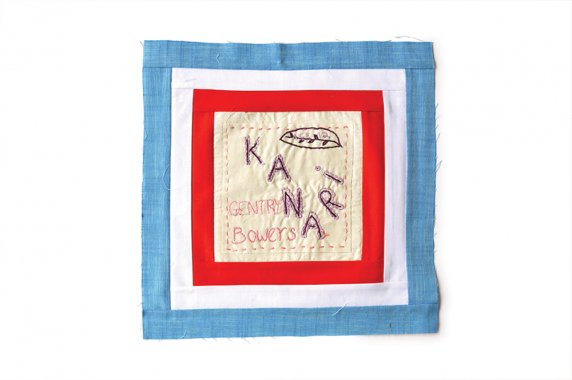In Memoriam
In Memoriam
At a sewing circle in Evanston, Illinois, participants embroider squares with the names of 56 black women and girls who have been killed in nearby Chicago. As they stitch, they read news articles and learn about what happened to these women. One example: Dejenaba Altman, 43, was shot in the middle of the afternoon, near an elementary school.
Melissa Blount, a clinical psychologist from Evanston, organized the sewing circle. Since early 2017, she’s brought together more than 200 people to create squares for two memorial Black Lives Matter quilts. Because conversations about racial injustice often focus on young black men, Blount decided to concentrate on black women killed by violence. Compared to men, they are more likely to die as victims of domestic abuse or as innocent bystanders caught in crossfire.
“I want to make these women’s lives more visible,” she says. “My goal is to grow empathy.”
Blount was inspired to hold the sewing circles after participating in one at the Block Museum of Art at Northwestern University. That group, led by artist Marie Watt, drew hundreds of people to talk and stitch on a theme. Blount had been volunteering with various anti-violence groups and had recently attended a workshop with the famed quilters of Gee’s Bend, Alabama. She realized a quilt with a Black Lives Matter theme could be a good way to start a dialogue about race and inequality in her city.
The results were powerful. “People became very connected to the names, even wanting to take the squares home to finish them,” Blount says.
Blount provided all the materials, including pink and purple thread – colors associated with girls and royalty, respectively – and the fabric. One square was dedicated to each victim. As a nod to the Chicago flag, Blount added red and blue borders around the squares and stars along the sides of the quilt. “The stars are sideways, because the city of Chicago is sideways on issues of racism and inequality,” she says.
In June 2017, the nearly finished quilt was exhibited at the Evanston Arts Center. Then a sewing circle participant arranged for the quilt to travel to nearby Niles North High School, where Blount spoke to the club Students Organized Against Racism. The students helped Blount sew the quilt’s binding, and afterward they decided to make their own quilt reflecting the challenges facing students of color at their school.
As soon as the first quilt was finished, Blount began organizing sewing circles for more quilts. Earlier this year, she hosted one in partnership with the Block Museum – where she was originally inspired to start the project – and some 175 participants showed up. (“It was overflowing,” she says.) Her goals are to keep the project going and exhibit the quilts in Chicago, where she hopes they will be seen by families of the women whose names appear on the quilts. Ultimately, she hopes to phase out her therapy practice to focus on art and social justice.
Sewing circle participant Emilie Hogan found the experience sobering. “When you see the quilt put together, it’s sad to see how big it is, how many lives have been lost due to violence,” she says. “With each death, our society loses so much.”
